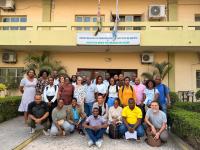RIETS brings together experts to discuss simulation-based education in Health Technician training

Simulation is a pedagogical strategy that combines resources and knowledge to train basic competencies, such as the improvement of cognitive, affective and psychomotor skills; and complex competencies, involving organizational and behavioral aspects, such as teamwork or a set of actions of an individual in a given situation; mobilized in a given context to perform tasks, it allows students to act in an environment that allows them to repeat a task safely with the opportunity for all members of a multidisciplinary team to practice the activity.


At the opening of the seminar, which brought together professors and researchers from Argentina, Bolivia, Brazil, Chile, Colombia, Spain, Portugal and Uruguay, the coordinator of the Fiocruz Global Health Center (CRIS), Paulo Buss, stated that the Ibero-American region is extremely important for Fiocruz and that the creation of the Ibero-American Network of Education of Health Technicians (RIETS), in March 2021, allows different organizations and minds to connect on priority issues. "They are islands that become fully connected archipelagos," he said, before recalling that "as a pediatrician, since my formation, I have always wondered why we didn't have this type of training (simulation), to facilitate teaching and respect patients," Buss said.
The vice-president of Education, Information and Communication of Fiocruz, Cristiani Machado, highlighted the networking trajectory of Fiocruz and its units, especially in the structuring cooperation of the so-called South-South relationship.
Anamaria Corbo, director of EPSJV, recalled that the school has been a World Health Organization Collaborating Center for the Training of Health Technicians for almost 20 years. She also pointed out that EPSJV's approach to the issue of clinical simulation is based on the example of the National Center for Clinical Simulation in Nursing (CeNSiCE) in Argentina. "We have the role, through the networks in which we act as Executive Secretariat, to think about training processes for the work of mid-level health professionals in the global context. From the example of Argentina, we decided to bring this debate to Fiocruz, with the Fernandes Figueira Institute (IFF) and the Evandro Chagas National Institute of Infectious Diseases (INI), in the contexts of work of the Foundation, not only in medium and high complexity, but also in Primary Care", she said.
Carlos Batistella, EPSJV International Cooperation Coordinator, highlighted the consensus reached based on a common purpose: to promote the use of clinical simulation in technician training. "This is relevant and pertinent because it can favor interprofessional education, addressing inequalities in the workplace, promoting patient safety and several other benefits of this methodology that we are identifying and that can be applied in the field of health technician training," he said.
The international seminar is part of one of the projects approved in the 1st Call for Network Projects registered in the Ibero-American Network Registry of the Ibero-American General Secretariat (SEGIB), financed with funds from the Spanish Agency for International Development Cooperation (AECID).
Clinical simulation: general overview

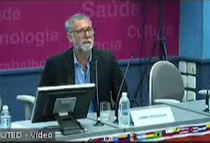
After the opening of the event, Aida Camps Gómez, president of the Spanish Society of Simulation and Patient Safety (Sessep), gave the lecture "Clinical simulation as a teaching-learning strategy in healthcare training: challenges for the incorporation of technicians in interdisciplinary and interprofessional scenarios", in which she presented her experience in the training and education of professionals at the University of Manresa in Barcelona (Spain). "Simulation requires clear and understandable methodologies rather than high technology. It is not true that including simulation in learning processes requires high technology. The key is to understand and apply the methodologies, give positive feedback and observe technical and behavioral skills," she said.
Gabriel Muntaabski, coordinator of the National Nursing Education Program (PRONAFE) and president of the National Clinical Simulation Network of Argentina (ReNaSiC), gave the lecture "Implementation of Clinical Simulation Laboratories and Centers: structure, equipment and processes". "A goal without a plan is just a wish. It is necessary to plan, but also to learn to adapt to unexpected scenarios. Adapt to the demands of the environment, just look at what is happening in Argentina, what has happened in Brazil in recent times. Processes and projects that have been adapting to new realities for four years. The best way for simulation to deal with these phenomena is to respond to the objective needs of the work teams," he said.
The round tables
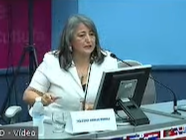 On the afternoon of the first day, the president of the Chilean Society of Clinical Simulation and Patient Safety (SoChiSim), Soledad Armijo Rivera, and the instructor of the National Learning Service (SENA) of Colombia, María Elena Zuleta Uribe, participated in the first round table on simulation experiences in health education in the Ibero-American context.
On the afternoon of the first day, the president of the Chilean Society of Clinical Simulation and Patient Safety (SoChiSim), Soledad Armijo Rivera, and the instructor of the National Learning Service (SENA) of Colombia, María Elena Zuleta Uribe, participated in the first round table on simulation experiences in health education in the Ibero-American context.
Soledad Armijo addressed the topic "Curricular integration of simulation in the training of health technicians: main aspects to consider in the design of an interprofessional simulation program" and Zuleta Uribe spoke on the "Inclusion of simulation in training programs for health service technicians based on the Primary Health Care strategy".
According to Soledad, the curriculum to be prepared for simulations depends on human factors -different categories, training levels, cultural realities- and available resources -technological, space, laboratory, etc.-. "The objectives must take into account the competencies and profile of the newcomers, to establish the design of the scenarios, the horizontal integration of the teams and the evaluation of the program," she emphasized.
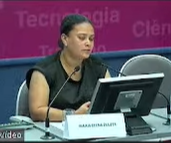 María Elena Zuleta presented the capillarity of SENA in Colombia and its strategies to train different populations in their territories. "In the case of Colombia, the differences between the urban and rural contexts are great, besides the fact that the work of Sena is respected in the territories where the armed conflict occurred. They are different realities and we need to train professionals to simulate working in a hospital environment or in areas far from health centers. We work with midwives and we have a Health Promoters program that has recently been launched," she explained, comparing the similarity between the staff of this new program and the work done by Community Health Agents in Brazil.
María Elena Zuleta presented the capillarity of SENA in Colombia and its strategies to train different populations in their territories. "In the case of Colombia, the differences between the urban and rural contexts are great, besides the fact that the work of Sena is respected in the territories where the armed conflict occurred. They are different realities and we need to train professionals to simulate working in a hospital environment or in areas far from health centers. We work with midwives and we have a Health Promoters program that has recently been launched," she explained, comparing the similarity between the staff of this new program and the work done by Community Health Agents in Brazil.
Alessandra Vaccari, member of the Board of Directors of the Latin American Federation of Clinical Simulation and Patient Safety (FLASIC), and Gustavo Norte, president of the Portuguese Society of Simulation Applied to Health Sciences (SPSim), formed the second panel of the afternoon.
Vaccari addressed the "Construction and validation of clinical simulation scenarios: challenges and possibilities in the training of health technicians", and Gustavo spoke about "Simulation as a learning methodology: collaborative development of simulation centers and societies at national and international level - The experience of the national registry of simulation centers and the basic training of simulation instructors".

 According to Vaccari, in the case of nursing, the technical and auxiliary workforce represents about 77% of the professionals in Brazil. "We have to face the fact that in no more than 10 years clinical simulation will be a patient's right, because there is already scientific evidence that (clinical simulation) increases safety for the patient, his family and also for the professional. In training, we need to validate scenarios by focusing on the target audience. A scenario validation study requires many professionals to act as expert judges. Currently, national nursing simulation associations are planning to create a repository of good practices to disseminate knowledge," she said.
According to Vaccari, in the case of nursing, the technical and auxiliary workforce represents about 77% of the professionals in Brazil. "We have to face the fact that in no more than 10 years clinical simulation will be a patient's right, because there is already scientific evidence that (clinical simulation) increases safety for the patient, his family and also for the professional. In training, we need to validate scenarios by focusing on the target audience. A scenario validation study requires many professionals to act as expert judges. Currently, national nursing simulation associations are planning to create a repository of good practices to disseminate knowledge," she said.
Finally, Gustavo addressed the two-day training model (in anesthesiology) developed by SPSim, which since 2017 has trained 75 professionals in 25 editions of the course. The initiative is being reformulated to promote a workload more focused on the practical aspects of simulation. "Our courses encompass theory and practice and have served as a reference for the creation of similar courses by other institutions. We are currently preparing to do the theoretical training online and use the two days for practical training. It is in practice that we best prepare professionals," he pointed out.
The complete program of the first day can be seen here.
The workshop

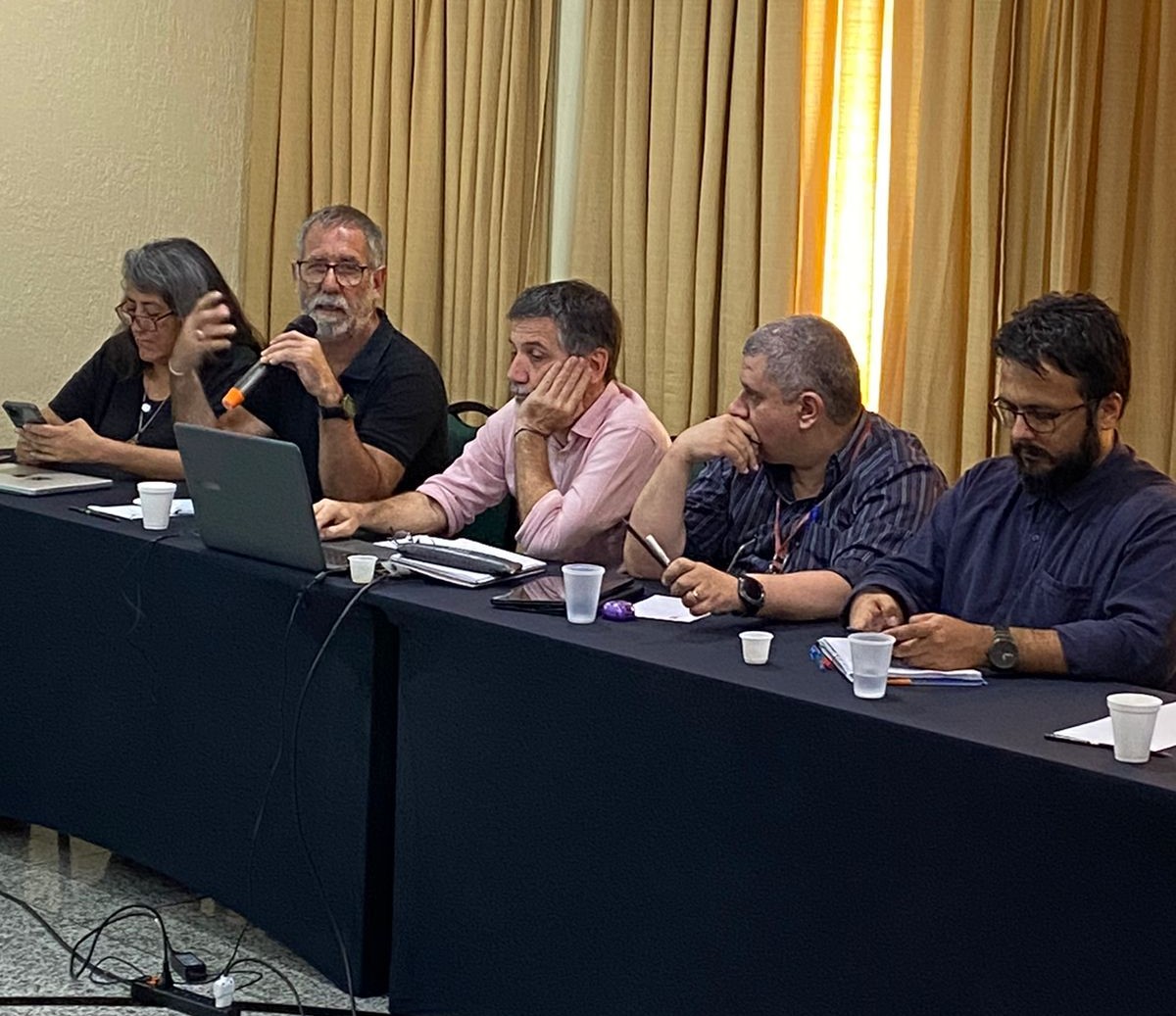 The day after the seminar, which was open to the public, a workshop was held for invited guests to discuss the main strategies -teaching, research, institutional articulation and cooperation- to advance the implementation of clinical simulation programs in health technician training institutions in the Ibero-American context.
The day after the seminar, which was open to the public, a workshop was held for invited guests to discuss the main strategies -teaching, research, institutional articulation and cooperation- to advance the implementation of clinical simulation programs in health technician training institutions in the Ibero-American context.
At the end of the workshop, the Rio de Janeiro Declaration on simulation-based education in the training of health professionals was drawn up, which addresses the need to promote the inclusion of education based on clinical simulation in the training of health technicians and proposes an agenda of initiatives up to November 2024 for the RIETS. The document points to a future in which all health technician training institutions can incorporate simulation-based education into their courses. The network's executive secretariat, led by EPSJV, will publish the full charter shortly.
The public statement contains advances agreed upon during the seminar, such as the conception that simulation as a learning strategy should be present not only in clinical activities, but also in laboratories; and incorporate interculturality, traditional knowledge and the establishment of reproducible methodologies in different environments. In addition, the RIETS also established the need for training to include behavioral aspects and post-traumatic stress situations for the humanitarian treatment of patients who have suffered violence, for example.


